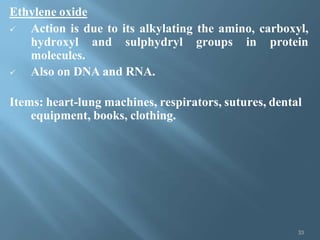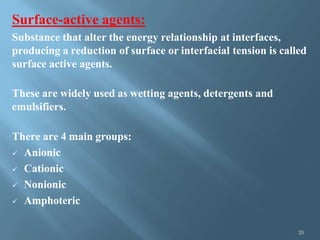This document discusses various methods of sterilization including physical and chemical agents. Physical agents include dry heat (hot air ovens, flaming, incineration), moist heat (pasteurization, boiling, steam), filtration, radiation, and ultrasound. Moist heat via autoclaving is the most reliable sterilization method. Chemical agents discussed are alcohols, aldehydes, dyes, halogens, phenols, and gases. The document defines key sterilization terms and explains the mechanisms of different sterilization methods.















































